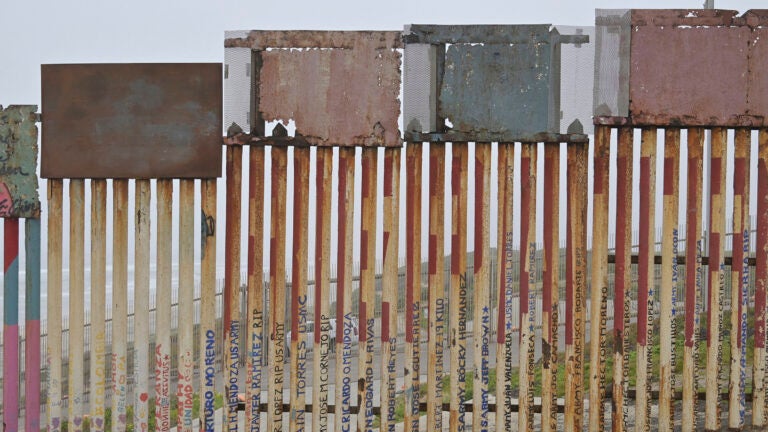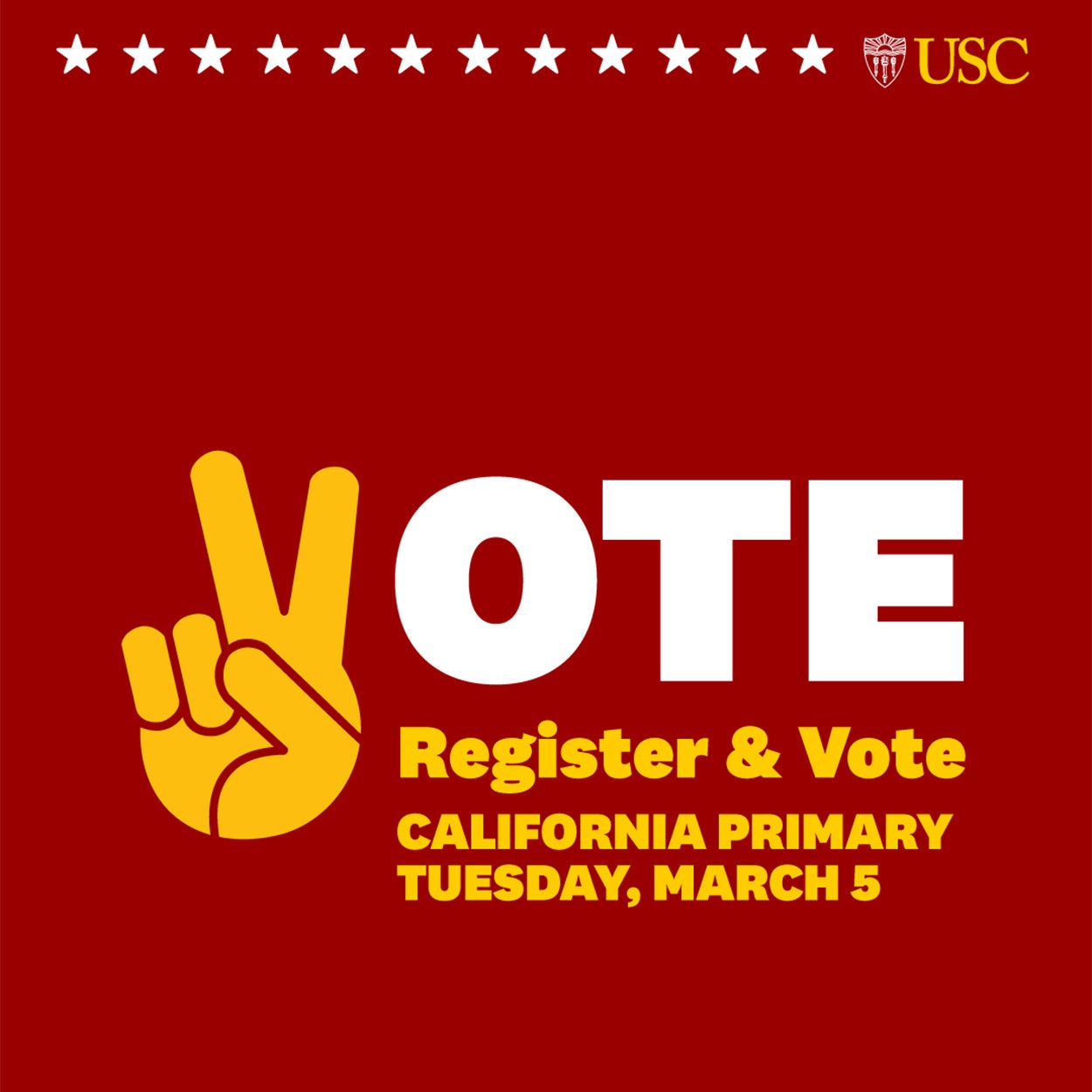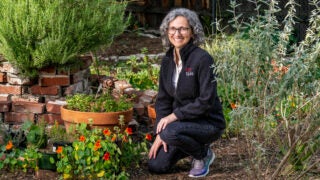
A new border fence will replace the previous barrier in the Friendship Park San Diego-Tijuana area. (Photo/Carlos Moreno, Sipa USA via The Associated Press)
Two truths and a lie about immigration
USC experts unpack the nuanced realities driving the United States’ immigration debate.

Congressional gridlock over border security talks, controversial proposals to restrict asylum and a looming impeachment trial for the U.S. Homeland Security Secretary Alejandro Mayorkas paint a stark picture of a nation deeply divided on immigration.
As the November presidential election approaches, immigration remains a powerful wedge issue, continuing to divide Americans.
While immigration remains a hot-button issue, USC experts caution that the way we talk about it often misses the mark.
“The current public discourse on immigration is making it difficult to advance forward-looking and realistic policies,” said Manuel Pastor, director of the Equity Research Institute at the USC Dornsife College of Letters, Arts and Sciences.
Truth: Polarization isn’t disagreement — it’s a political strategy
While we may think of polarization as simply strong disagreement, experts suggest it’s more calculated. The Polarization Index, developed by USC researchers, identifies immigration as the most polarizing issue in American politics, fueled by partisan political forces seeking to benefit from the continued conflict.
“We thought that polarization was disagreement, but it isn’t. It’s a political strategy for raising money, getting votes and, from the media’s perspective, a way to improve ratings,” said Fred Cook, director of the Center for Public Relations at the USC Annenberg School for Communication and Journalism, which created the Polarization Index in conjunction with the global public relations agency Golin, using data from Zignal Labs.
This strategy played out during the 2022 midterm elections when the governors of Texas and Florida leveraged immigration as a winning political ploy, Cook said. Facing reelection and knowing this hot-button issue would energize his supporters and undermine his political rivals, Gov. Ron DeSantis of Florida organized the delivery of a plane full of migrants to Martha’s Vineyard, the resort island near Massachusetts. That same year, Gov. Greg Abbott of Texas launched a busing program to transport migrants who had been released from federal custody to other parts of the country — a controversial initiative that has cost $148 million in taxpayer dollars to date. Both stunts garnered significant media attention and reignited public debate on immigration, shifting the spotlight back on the two governors seeking reelection.
“Politicians and strategists are keenly aware of the hot-button issues that resonate with their voters, and both sides of the political spectrum participate in creating polarization,” Cook said. “However, their focus tends to be fixed on these issues, potentially at the expense of other matters that may be more important, relevant or pressing.”
Pastor, who is also a Distinguished Professor of sociology and American studies and ethnicity at USC Dornsife, emphasized the harmful consequences of using immigration as a political tool.
“Demonizing immigrants for political gain is both reprehensible on a moral level and leaves us ill-equipped to deal with complex realities,” he said. “To level-set, we need to challenge dangerous stereotypes and recognize the full humanity of migrants — and we need to acknowledge the stresses and strains at the border and in our receiving communities.”
Truth: Important nuances get lost in the heat of debate
Pastor added that while political debate about immigrants is often focused on controls at the border, the critical drivers are far from those borderlands.
“The climate crisis is going to continue to induce migration, particularly from Central America as a combination of droughts, hurricanes, and political and quotidian violence force an exodus,” Pastor said.
“Meanwhile, an aging America will continue to have high demand for new workers to fill in and keep our economy growing. That’s where the real discussion will be — and it’s far from where the political debate is. That’s enormously frustrating for immigrants but also for anyone who is serious about solutions.”
Other experts agree. Dowell Myers, professor and director of the Population Dynamics Research Group at the USC Price School of Public Policy, highlights the often-ignored role of aging.
“I’m concerned that people often view immigrants as static figures who never change or age. The reality is, like everyone else, they grow older and adapt over time. Yet, the public image of immigration tends to focus on young newcomers, creating what I call the ‘Peter Pan Fallacy’ where immigrants are seen as perpetually frozen in that initial stage,” Myers said.
He uses California as an example, highlighting how Mexican immigrants initially have low homeownership rates but surpass the state average after 30 years. This crucial nuance, Myers argued, is often lost in public discourse, preventing a deeper understanding of the issue.
Lie: America has an ‘open border’ policy
There is a backlog of over 1 million asylum cases in the United States, which experts attribute to outdated and overwhelmed processing systems. “The current law requires immigration officials to process credible claims for asylum before deporting or expelling a migrant from the country,” explained Jean Lantz Reisz, co-director of the USC Immigration Clinic and clinical associate professor of law at the USC Gould School of Law. “As a result of the backlog, migrants who have had background checks may remain in the U.S. for years waiting for their applications to be processed.”
This reality has been misconstrued as an “open border” policy by some, but Reisz clarifies, “This reality has often been wrongly referred to in the media by far-right Republicans as an ‘open-border policy.’ This is not a new policy; asylum law has been in place for decades. What has changed is the number of asylum-seekers and their reasons for coming to the United States, which are increasingly desperate.”
Seeking asylum remains a legal right for those facing persecution, Reisz emphasized. However, many arriving at the border will not qualify. She highlights that the political divide surrounding immigration undermines efforts to modernize processing systems and effectively address the backlog.
While there’s broad, bipartisan agreement on the need for immigration reform, Congress has yet to agree on the specifics on what that reform should be.
“Far-right conservatives want more funding for border security including physical barriers like a wall, but do not want funding for immigration officials to increase the capacity to process asylum applications,” she said. “Portraying migrants at the southern border as criminals or lawbreakers may garner support for more physical border barriers in some constituencies, but it ignores the fact that migrants expressing fear of returning to their countries have the legal right for their asylum applications to be processed.”



